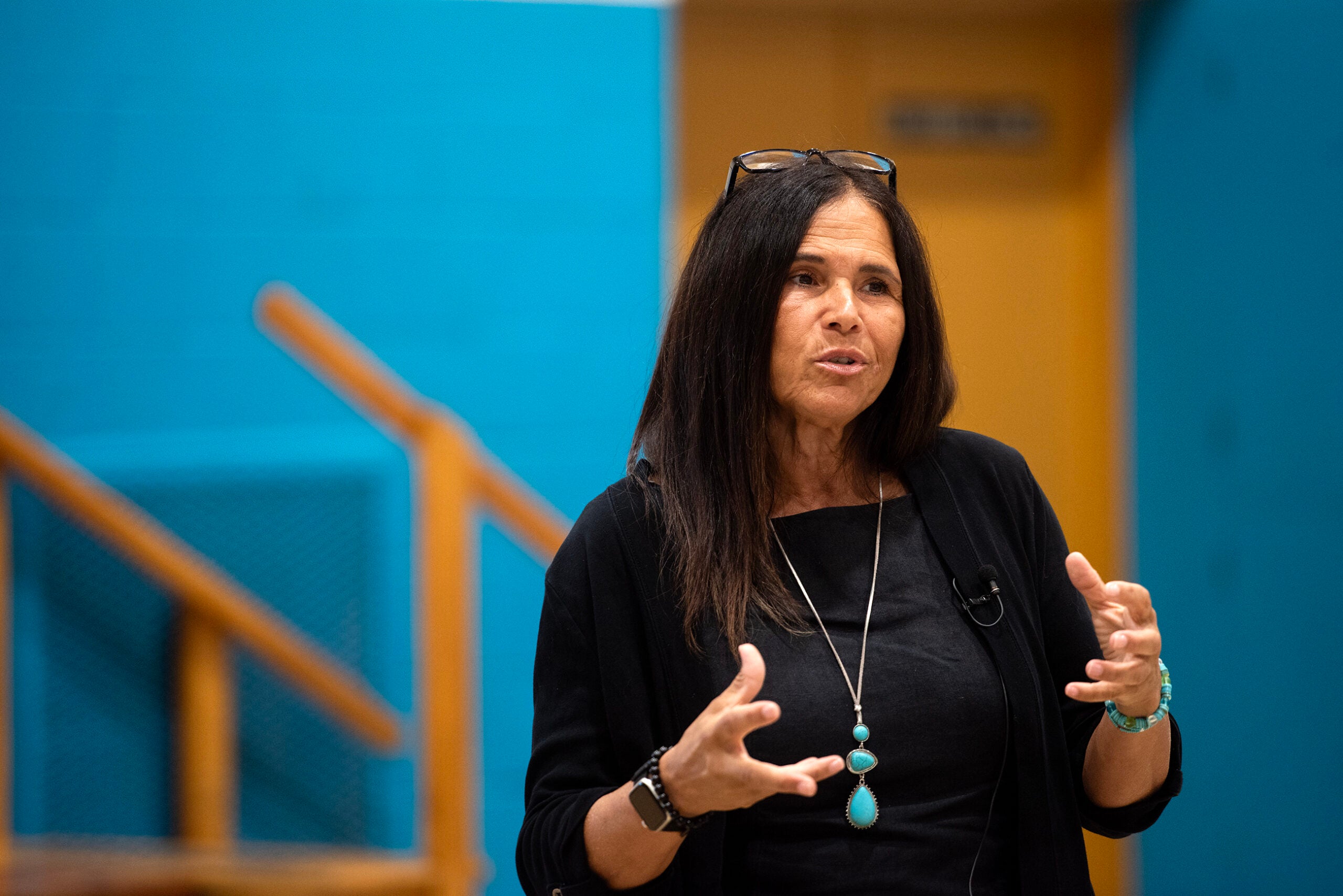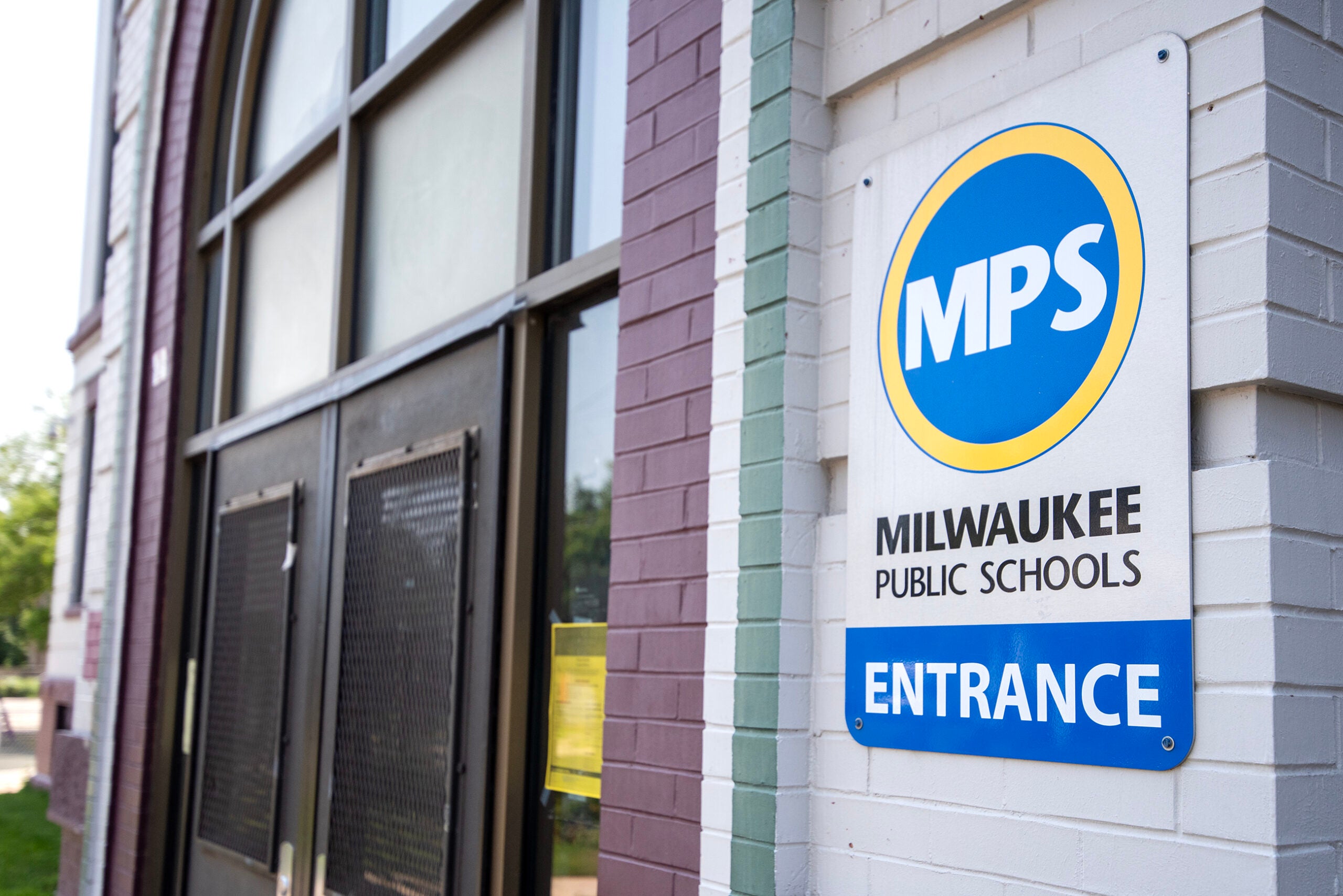Milwaukee Public Schools will ask voters in an April 2 referendum to increase funding for schools by $252 million over the next four years.
The district said the money is needed to increase teacher salaries, maintain buildings and purchase updated textbooks.
MPS officials said they are facing a $200 million budget shortfall in 2025. That’s largely due to the expiration of federal pandemic relief dollars, inflation and enrollment losses.
News with a little more humanity
WPR’s “Wisconsin Today” newsletter keeps you connected to the state you love without feeling overwhelmed. No paywall. No agenda. No corporate filter.
Four years ago, Milwaukee voters approved an $87 million referendum for MPS. This ask, nearly triple the 2020 request, would mean a $432 tax increase for the owner of a $200,000 home.
Milwaukee Mayor Cavalier Johnson and County Executive David Crowley have expressed support for the referendum, saying it’s necessary for the district to maintain operations.
But Milwaukee’s largest business organization, the Milwaukee Metropolitan Chamber of Commerce, or MMAC, has launched a campaign against it. MMAC president Dale Kooyenga said the measure would result in “an unaffordable property tax hike that will hit homeowners and renters directly in the pocket.”
MPS is not alone in turning to voters
On the April 2 ballot, 91 schools from 84 different districts have referenda on the ballot, said Sara Shaw, a researcher with the Wisconsin Policy Forum.
“MPS stands out compared to the other districts, simply because of the size and how much money it is asking for,” Shaw said. “But all of these districts are operating in a context in which state revenue limits haven’t kept pace with inflation.”
Wisconsin’s public schools are funded primarily through a combination of local property taxes and state funding, which is mainly calculated based on property value in the district, enrollment and district spending.
From 1999 to 2009, state and local revenue increases were tied to inflation. That provision was removed from state statute, and changes to revenue limits have since largely lagged inflation.
In the 2021-23 biennial budget, revenue limits were not increased. This year, in a surprise partial-veto from Gov. Tony Evers, school districts were given the ability to collect an additional $325 per student annually for the next 402 years.
But, that amount was still about $75 less than the inflation rate at the time, which was 4 percent.
MPS and Milwaukee taxpayers face unique challenges
Student enrollment losses have been the main driver of MPS’ lagging revenue limit.
The school district’s enrollment has fallen by nearly 32 percent since 2004. MPS had a high of 178 school buildings in 2008, but has gradually reduced that number to 150 as of 2022, according to the Policy Forum.
Its number of instructional staff fell from 7,266 in 2004 to 4,594 in 2022, a decrease of 36.8 percent, which is more than the enrollment decline in the same time period.
The district currently has more than 600 vacant positions, including almost 300 teacher vacancies. The 2024 budget contains a $70 million savings, assuming those positions will remain vacant this year.
“For MPS leaders to convincingly argue to state leaders that they need more funding despite declining enrollment, it will be imperative to show how they are adjusting permanent staffing levels to respond to their reduced student body,” the Policy Forum report notes. “That same statement arguably could be made today with respect to MPS’ arguments to city voters about the referendum.”
MPS’ per pupil funding under current revenue caps are currently third highest among the state’s 10 largest districts and in the middle of the pack when compared to 10 large districts in the metro Milwaukee region, with whom MPS competes for students and staff, according to the policy forum.
If the referendum is successful, MPS would be near the top in per pupil funding.
But the district serves the highest percentage of students — 82.5 percent — from economically disadvantaged backgrounds. MPS also serves the highest percentage of students with disabilities at 19 percent, and the highest percentage of English learners at 14.5 percent of the 10 identified metro area peers, according to the Policy Forum.
“It costs money to make up for the lack of resources that are not there in the community, or in a traditional school setting, to make sure we are giving every child equitable access to education,” Shaw said. “I find it more helpful to compare who Milwaukee is competing for in terms of staff and students instead of dollar for dollar comparisons.”
At the same time, Milwaukee property taxpayers are among the poorest in the state and they have just started paying a new 2 percent city sales tax, Shaw said.
That makes this decision hard for some Milwaukee residents who want to support students and public schools but also need to balance their own financial needs, Shaw said.
Milwaukee taxes could have been lowered this year
Instead of cutting taxes this year the Milwaukee Board of School Directors voted to increase its Fund 80 levy by $77.7 million.
Fund 80 is a special fund for non-classroom activities that serve the entire community including adult education, recreation and day care services.
By increasing the fund, the district’s total tax levy is $320 million this year.
MPS officials told the Policy Forum that over $40 million of the Fund 80 increase will be spent on a new recreation community center and aquatic facility at the former Browning School and Browning Playfield location that has been in the planning stages since 2018.
The district had previously considered issuing debt for the project but now will pay cash to avoid interest costs. The remaining amount will be used to address a backlog of repair needs for other MPS-owned recreational facilities.
The $77.7 million could have been used to reduce taxes this year.
Wisconsin Public Radio, © Copyright 2026, Board of Regents of the University of Wisconsin System and Wisconsin Educational Communications Board.







